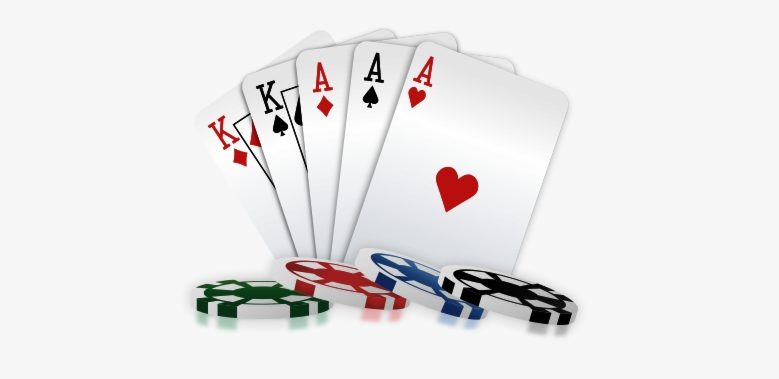The subject of this review material will be a very interesting poker combination Full House.
As for Full House in poker – it is a full five-card combination, inferior in its hierarchy to Cara and a strong Straight Flush. It is also one of the five combinations that do not use the high card kicker.
Full House is an interesting and strong enough set, but it does not give its owner a hundred percent chance to win, as poker is known to win not cards, but people.
Full House in Poker – the combination
In layman’s terms, a Full House is a set of Three and a Pair, which means three cards of one (identical) face value and two cards of another (identical) face value.
What you should know – the main in this set is Triple cards, so in a situation where a bitcoin player, for example, collected a Ten, a Ten, a Ten + Jack and Jack, you should say: “Full House of Tens and Jacks”, but saying “Of Jacks and Tens” is wrong.
The power of Full House combinations in poker
As we said above – Full House is one of the very strong combinations. Stronger than it is Kare – a set of four cards of different suits of the same face value and Street Flush.
In the case when Full House goes to not one, but two participants – the strength of the hand is determined by the seniority of the included Three. Let’s look at this with an example:
A Full House of Jacks and Kings, JJJKK, is inferior to a set of Queen and Nines, QQQTT, since the Ladies are stronger than the Jacks.
In those rare cases where 3’s in a Full House are equal in value, the Pair is decisive – that is Ace, Ace, Ace + Jack, Jack is stronger than Ace, Ace, Ace + Ten, Ten.
If the combinations are equal – the players have the same Pairs in hand and on board there is a common Three (Set) – the pot is divided equally between them.
The strongest variant of Full House in poker is a set of three Aces and two Kings – AAAKK.
The odds of collecting
Let’s dive a little bit into the statistics and find out what the odds are of making a Full House combination under different circumstances and at different stages of the game. We will use Texas Hold’em, the most popular poker game today, as an example.
You have Pair in your hand; the odds of making Full House on the flop are one percent.
If the cards in the starting hand are different in value, the chance of getting Full House on the flop decreases to 0.1 percent.
A Three (Set) on the flop gives us a thirteen percent chance of being strengthened to Full House on the turn and thirty percent on the river (the final street in poker).
A Three (Set) on the turn street can become a full Full House on the river with a 19.5 percent chance.
In a situation where the participant receives two Pairs on the flop (for example, a pocket pair and a common pair on the board), the chances to get stronger on the turn are less than nine percent, i.e., 8.5. By the river, however, the odds increase to 16.5%.
But if two Pairs are only on the turn, the odds of making a full full house are nine percent.
To summarize, let’s go over the material once again – Full House is a rare and strong enough combination in poker – it’s one of the three most important ones. It is inferior only to Cara and straight flush, if you remembered about Royal Flush, let us note that it is not a separate combination, but a royal, so to say, a variant (up to ace) of Straight Flush.
Full House consists of five cards, it has no kicker, as the combination is full-fledged. It consists of a Set or Three of cards of the same value, and a Pair of cards, also of the same value.
The strength of the combination is determined by the par value of three (Set), if the players have the same three – the strongest is determined by the par value of a pair. And when we get into an extremely rare situation where there are two completely identical hands, both participants win and the game pot is divided between them in equal shares.
Professional bitcoin poker players love this combination – not only does it give the player a good chance of winning, but it also requires him to make accurate, thoughtful decisions and pay special attention to his opponents – as they may have the same set, but with stronger cards and his Three may be higher than yours in value.
Knowing your opponent’s habits and style of play will help you better figure out whether to fold or call, knowing your opponent is bluffing too often. As with many other situations, be aware of your table environment, practice more, and don’t make decisions in the heat of the moment.
